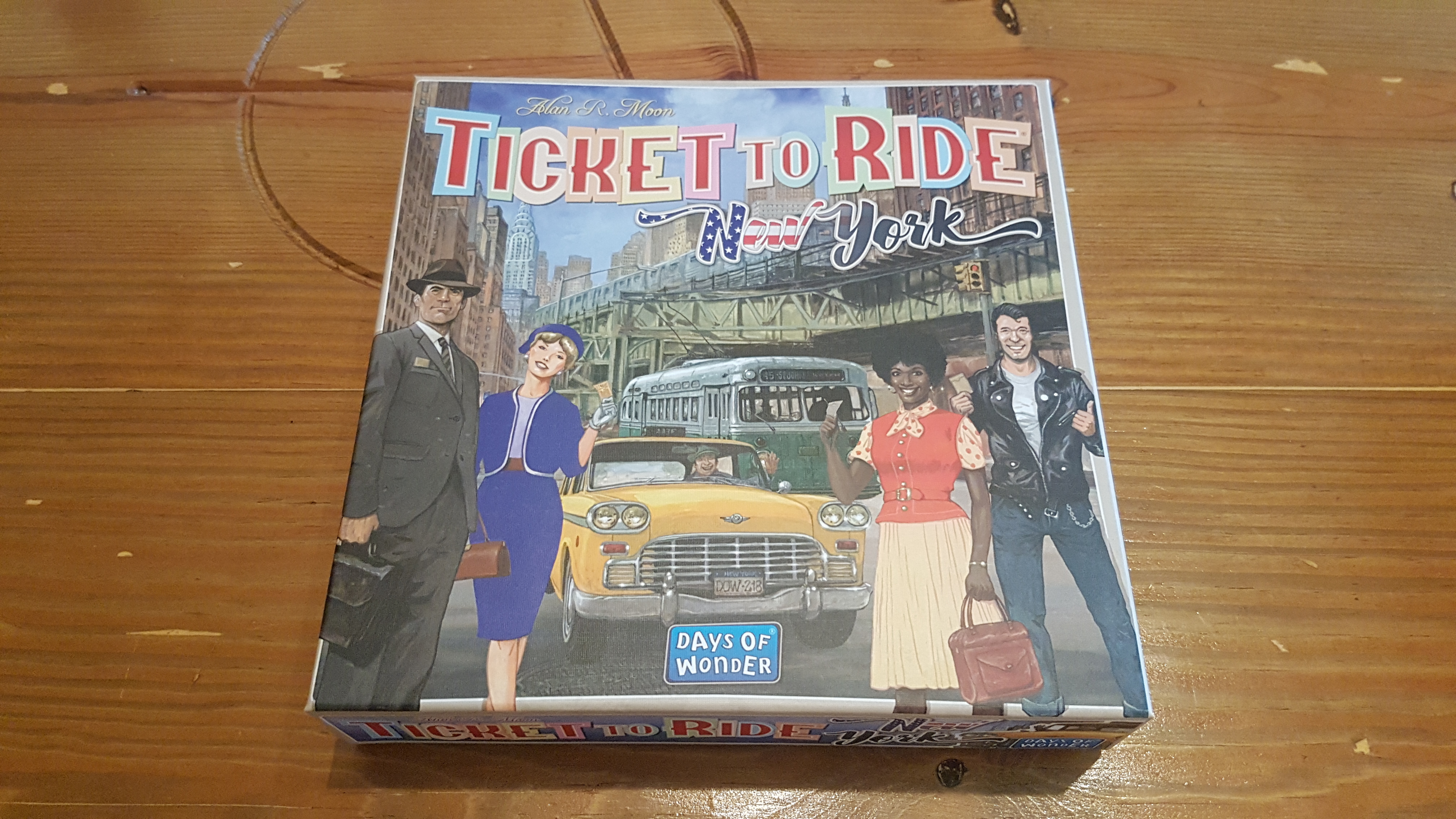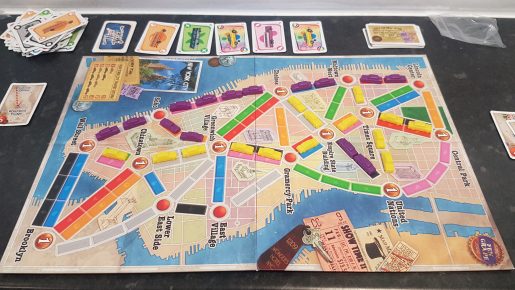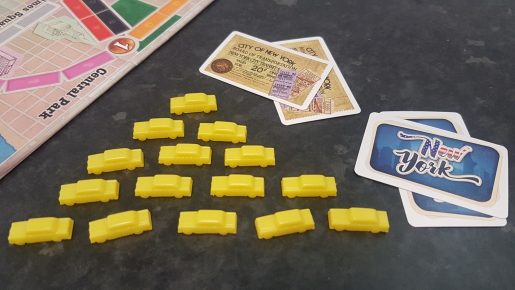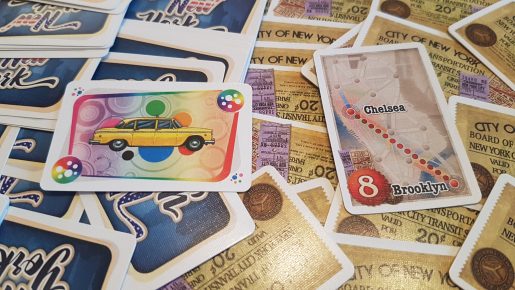Ticket to Ride: New York is the brand new scaled down card drafting and network building board game from the iconic TtR franchise. Designed by Alan R. Moon and published by Days of Wonder, Ticket to Ride: New York is specifically designed to take around 15 – 20 minutes to play for 2 – 4 players. Whilst set collection mechanics remain the iconic trains are out, being replaced by taxis. However, what has all these changes done to the gameplay? Let’s find out!
For those familiar with the franchise the gameplay isn’t going to be new. The aim of spending sets of cards to claim routes, to complete destination tickets, for points is still present. The biggest change is the vast reduction of the map, the available spaces to place pieces and individual players’ supplies. At the offset of the game each player will get 15 taxis, not train carriages, in their player color, two transportation cards (train cards of old) and two destination tickets.
On a turn a player can do one of three actions: draw transportation cards, claim a route or draw destination tickets. When drawing additional transportation cards players can choose two cards from the top of the deck, two regular cards from a display of 5 face up available cards or a single face up Taxi. The purpose of these transportation are to claim the routes on the board. For example, a red route on the board that has three spaces between two locations can be claimed by turning in 3 red transportation cards. Taxis are wild cards and can be used as any color, hence only getting one when openly drawing them.
Some of the routes on the board are grey in color, but there are no grey transportation cards. These routes can be claimed with a set of any individual color, with the amount matching the lengths route. Being a smaller board there are routes of lengths 1, 2, 3 and 4, far from the long 8 part routes seen on other Ticket to Ride boards. Scoring is all done at the end of the game, unlike other variants, with routes gaining points based on length; 1, 2, 4 and 7 points respectively. This helps the speed of the game, while it does lengthen the scoring phase it conversely doesn’t see people checking their scores and doubling the workload.
Destination tickets, of which players must keep at least one of the two they are dealt at the start of the game, highlight two locations which players need to connect. Whilst the exact route doesn’t matter between the locations if the player claims routes to connect the locations they’ll score an indicated number of points. Fail to do so and you’ll be losing the same number of points, so watch out for others blocking you. On a turn the active player can choose to draw an additional two destination cards, again keeping at least one of them, to give them more route objectives. Try not to do this too late on to avoid being unable to finish the destination tickets and losing points in the process.
In Ticket to Ride New York there is an additional way to score and that is by claiming routes that connect to Tourist Attractions. Each of these are labelled with a “1” on the board, to indicate how many points are awarded. Each of these locations can only be scored once by each player but they can still add up fast. Play continues with each player taking one action until one player gets down to having only two taxis left. At this point, each player gets one final turn. Noticing when this might occur can be key to finishing destination cards so pay attention to what others are doing. Once the final turn has been taken it is time to add up the points earnt from claimed routes, destination cards and linking to Tourist Attraction locations. The winner is whomever has the most points.
Ticket to Ride New York is an extremely short variant in comparison to the rest of the series. At the full player count of 4 players, even with brand new players, you’ll rarely see a game go past the 25-minute mark, even with plenty of questioning. At the other end of the spectrum a game can be speeded through in just over 10 minutes by fans of the series, though commonly the 15-minute mark is more accurate with setup and teardown included.
A number of people have issues with the luck aspects to the Ticket to Ride series. Alas, the same luck of the draw is present in Ticket to Ride New York, so if this is a major issue for you in a main games then it’ll continue to be in this filler. Conversely, if it is only a slight niggle or something that you don’t mind, the shortened game length does alleviate some of the problem. Effectively, getting players less invested via a shorter game length results in players not getting quite so annoyed when an opponent gets lucky. Far from a solution to a problem but as the potential frustration is lessened players do seem to be more accepting of the game.
Despite the fact that New York has a subway, that could have matched up with the trains the series is known for, using taxis was perfect. Taxis are that iconic type of transportation for the Big Apple, in particular the yellow ones, and it isn’t the first time that a different mode of transport has made it into Ticket to Ride (boats were present in Rails & Sails). It will be interesting to see what Days of Wonder does in the future, if they deem the sales of Ticket to Ride New York to be successful, with this mini-series, given the wealth of opportunities for cities around the world.
Ticket to Ride New York is designed to be a small footprint, short game and it delivers on both fronts. Within minutes you’re in the midst of a game and before long the winner is crowned, yet the set collection and route building choices from the series are still present. The destination tickets aren’t as long spanning, due to the limitation of the board, and that is one thing missing that I enjoy about the “full” experience. However, for the ease of getting the game to the table, Ticket to Ride New York is comfortably staying in my collection.
[Editor’s Note: Ticket To Ride: New York was provided to us by Days of Wonder for the review.]




